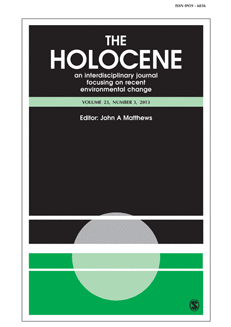
HOLOCENE
metrics 2024
Charting the Course of Human-Environment Dynamics.
Introduction
HOLOCENE is a leading academic journal published by SAGE Publications Ltd that serves as an essential platform for researchers and scholars in the fields of archaeology, earth-surface processes, ecology, and paleontology. With an impressive Q1 ranking in prominent categories like Archaeology, Earth-Surface Processes, and Paleontology, this journal is dedicated to disseminating high-quality research that examines the dynamic interactions between humans and their environment throughout the Holocene epoch. Released biannually, it covers innovative studies and comprehensive review articles that contribute to our understanding of environmental changes and their implications across various disciplines. Although it does not offer open access, HOLOCENE maintains a robust reputation with an influential impact on the academic community, making it a vital resource for professionals, researchers, and students who aim to expand their knowledge and explore current developments in Earth and environmental sciences. With a commitment to excellence, HOLOCENE continues to shape the discourse in its field from its headquarters in the United Kingdom.
Metrics 2024
 0.78
0.78 1.60
1.60 2.30
2.30 132
132Metrics History
Rank 2024
Scopus
IF (Web Of Science)
JCI (Web Of Science)
Quartile History
Similar Journals
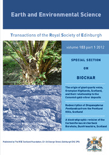
Earth and Environmental Science Transactions of the Royal Society of Edinburgh
Connecting research with real-world environmental applications.Earth and Environmental Science Transactions of the Royal Society of Edinburgh is a prestigious journal published by Cambridge University Press, dedicated to advancing research in the field of Earth and planetary sciences, as well as environmental science. With its ISSN 1755-6910 and E-ISSN 1755-6929, the journal has established itself as a crucial platform for disseminating innovative research and comprehensive reviews since its inception in 2007. Positioned in the Q3 quartile for both Earth and Planetary Sciences and Environmental Science, it contributes significantly to the ongoing dialogue and development in these areas, boasting a Scopus ranking that reflects its commitment to scholarly excellence with an emphasis on interdisciplinary approaches and real-world applications. The journal is based in the United Kingdom, with its editorial office located at the Edinburgh Building, Shaftesbury Road, Cambridge. As an essential resource for researchers, professionals, and students alike, Earth and Environmental Science Transactions offers opportunities for open discourse on pressing environmental challenges, fortifying its role in fostering a deeper understanding of our planet's systems and their interconnectedness.
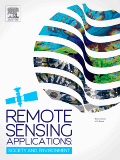
Remote Sensing Applications-Society and Environment
Pioneering insights from remote sensing for global sustainability.Remote Sensing Applications-Society and Environment, published by Elsevier, stands at the forefront of interdisciplinary research, bridging the fields of remote sensing and environmental science. With an impressive impact factor and recognition within the Q1 quartile in both Computers in Earth Sciences and Geography, Planning and Development, the journal is a vital resource for researchers, professionals, and students committed to advancing our understanding of environmental dynamics through innovative remote sensing technologies. Since its inception in 2015, this journal has cultivated a rich repository of knowledge, addressing pertinent societal and environmental issues, making it a leading source for transformative applications in the field. Accessible and relevant, articles published here not only explore theoretical advancements but also practical implications, ensuring research findings are effectively disseminated to stimulate further inquiries and applications in sustainability and ecological stewardship. The journal's strong Scopus rankings, particularly within its categories, solidify its role as an essential platform for scholarly exchange.
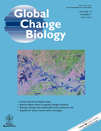
GLOBAL CHANGE BIOLOGY
Navigating the Complexities of Global Environmental ChangeGLOBAL CHANGE BIOLOGY, published by Wiley, is a leading journal dedicated to advancing the scientific understanding of the relationships between biological systems and global environmental changes. With an impressive impact factor placing it in the Q1 category across multiple disciplines—including Ecology, Environmental Chemistry, and Global and Planetary Change—this journal is essential for researchers, professionals, and students aiming to stay at the forefront of this dynamic field. The journal has a rich history since its inception in 1995, continually providing a platform for high-quality research that informs policy and management practices worldwide. Although it is not open access, the journal remains a valuable resource for those committed to exploring the complexities of ecological and environmental change. With a Scopus ranking of #3 in Global and Planetary Change and #6 in both Ecology and Environmental Chemistry, GLOBAL CHANGE BIOLOGY continues to shape the dialogue on the pressing environmental challenges of our time.
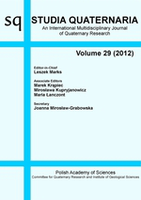
Studia Quaternaria
Illuminating the complexities of our planet's surface.Studia Quaternaria is a leading academic journal published by the Polish Academy of Sciences, Institute of Geological Sciences, specializing in the dynamic fields of Earth-Surface Processes and Geology. With an ISSN of 1641-5558 and an E-ISSN of 2300-0384, this journal has been a prominent platform for scholarly discourse since its inception in 2000. Operating under the open-access model, it aims to disseminate high-quality research that is accessible to a global audience. Studia Quaternaria holds a Q3 ranking in both relevant quartiles as of 2023, indicating its commitment to advancing knowledge in its disciplines despite centering in competitive academic environments. With its publications indexed in Scopus, the journal remains a valuable resource for researchers, professionals, and students looking to stay abreast of innovations and discoveries in Earth-Surface Processes and Geology. Encompassing a broad scope of studies, the journal represents an essential contribution to the geological sciences, fostering a deeper understanding of our planet's changes and processes.

METEOROLOGY AND ATMOSPHERIC PHYSICS
Pioneering Research in Meteorology and Atmospheric PhysicsMETEOROLOGY AND ATMOSPHERIC PHYSICS is a premier journal published by SPRINGER WIEN, dedicated to advancing the study of atmospheric phenomena and weather-related sciences. With an ISSN of 0177-7971 and an E-ISSN of 1436-5065, the journal has established itself as an important contributor in the field, particularly noted for its contributions in atmospheric science, holding a Q3 ranking in the 2023 category quartiles. Covering a wide array of topics from meteorological modeling to the physics of the atmosphere, it serves researchers, professionals, and students alike, facilitating the dissemination of significant findings and innovative research. The journal’s acceptance of articles until 2024 encourages a continuous influx of knowledge, and despite its lack of Open Access, it plays a crucial role in enriching the academic landscape for those engaged in Earth and planetary sciences, holding a commendable rank of 78 out of 148 in Scopus. Located in the scenic city of Vienna, Austria, the journal is positioned to harness the vibrancy of the academic community, providing a platform for valuable insights that can drive forward the field of meteorology and atmospheric physics.
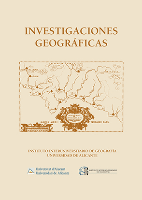
Investigaciones Geograficas-Spain
Connecting global insights through open access research.Investigaciones Geográficas-Spain is an esteemed academic journal published by the Universidad de Alicante, dedicated to advancing the fields of geography, planning, and development as well as earth and planetary sciences. With its commitment to open access since 1983, the journal ensures that research is readily available to a global audience, facilitating knowledge dissemination and collaborative discourse. As reflected in its 2023 Scopus rankings, it holds a commendable position within the Q3 category in both Earth and Planetary Sciences and Geography, Planning and Development, making it a noteworthy resource for scholars and practitioners in these disciplines. The journal's scope encompasses diverse geographical research, aiming to address pressing environmental and societal challenges through empirical studies and theoretical advancements. By contributing to the knowledge reservoir from Spain and beyond, Investigaciones Geográficas-Spain serves as a vital platform for researchers, professionals, and students seeking to enrich their understanding of geographical phenomena.

VEGETATION HISTORY AND ARCHAEOBOTANY
Charting the Course of Vegetation Through Human HistoryVegetation History and Archaeobotany is an esteemed academic journal published by Springer, dedicated to the exploration of the interactions between vegetation, human activity, and the archaeological record. With its history spanning from 1992 to 2024, the journal has established a significant presence in the academic community, particularly with its strong impact reflected in its Q1 rankings across diverse fields such as Archaeology, Paleontology, and Plant Science. The journal consistently ranks among the top publications, achieving remarkable positions such as 12th in Archeology and 9th in Paleontology according to Scopus, which underscores its influence and quality in the field. Aimed at researchers, professionals, and students alike, Vegetation History and Archaeobotany serves as a crucial resource for those seeking to understand the pivotal role of plant remains in reconstructing past environments and human interactions. Readers can expect to find rigorously reviewed articles that contribute to the ongoing discourse in vegetation studies and archaeological science.
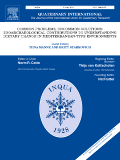
QUATERNARY INTERNATIONAL
Exploring Earth's Transformative Past.Quaternary International is a prestigious journal published by Pergamon-Elsevier Science Ltd, focusing on the interdisciplinary study of the Quaternary Period, which encompasses significant geological, hydrological, and climatic changes. With an ISSN of 1040-6182 and E-ISSN 1873-4553, it stands as a critical resource in the realm of Earth-Surface Processes, achieving a strong position within the academic community, evidenced by its 2023 Scopus rank of #32 out of 179 in this category, corresponding to an impressive 82nd percentile. Since its inception in 1989, this journal has provided valuable insights and contributed to the advancement of knowledge in the Earth and Planetary Sciences. Researchers, professionals, and students alike will find a wealth of original research articles, reviews, and case studies that inform and inspire further studies in the Quaternary sciences. Although the journal does not currently offer open access options, its reputation for rigorous peer review and impactful content underscores its significance in shaping scholarly discourse in the field.

Acta Geographica Slovenica-Geografski Zbornik
Innovating perspectives on earth sciences and culture.Acta Geographica Slovenica-Geografski Zbornik is a prominent academic journal published by the Geografski Institut Antona Melika ZRC SAZU, situated in Slovenia. This open-access journal, active since 2003, has made significant strides in the fields of cultural studies, geography, and earth sciences, earning impressive rankings in its respective categories—Q1 in Cultural Studies and Q3 in both Earth and Planetary Sciences and Geography, Planning and Development. With an impactful presence evidenced by its Scopus rankings, including being placed in the 90th percentile for Cultural Studies, Acta Geographica Slovenica serves as an essential platform for researchers, professionals, and students alike, facilitating accessible scholarly dialogue and contributing to the development of geographical and cultural knowledge. The journal is dedicated to advancing research that develops innovative perspectives on geographical phenomena, making it an invaluable resource within the academic community.
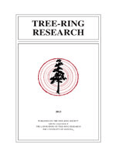
Tree-Ring Research
Uncovering Nature's Secrets Through Tree-Ring ScienceTree-Ring Research is a prestigious journal dedicated to advancing the interdisciplinary study of tree-ring science, encompassing atmospheric science, geology, paleontology, and forestry. Published by the TREE-RING SOC in the United States, this journal serves as a vital platform for researchers and professionals seeking to share innovative findings and develop collaborative methodologies in dendrochronology and its applications. With a commendable standing across multiple categories, including Q2 in Forestry and Q3 rankings in Atmospheric Science, Geology, and Paleontology for 2023, Tree-Ring Research holds an important position within the academic community. Researchers are encouraged to access recent studies and contribute their findings, fostering a rich dialogue that illuminates the complexities of environmental change and forest ecosystems. The journal's comprehensive scope and commitment to quality make it an essential resource for those engaged in understanding the critical role trees play in our planet’s ecological health and history.